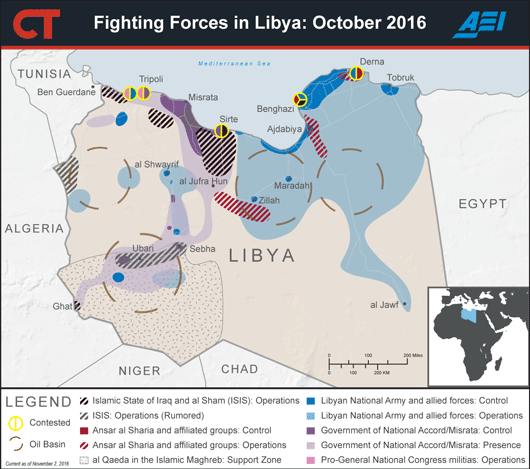{{currentView.title}}
November 03, 2016
Fighting Forces in Libya: October 2016
Escalating competition among Libyan factions for control of state institutions and resources will diminish the U.S. counterterrorism partner’s ability and will to maintain its commitment to fight against the Islamic State of Iraq and al Sham (ISIS). The U.S. relies on the UN-brokered Government of National Accord (GNA) to combat ISIS in Libya. ISIS is only one of many significant challenges to the GNA’s legitimacy, however. The GNA has been unable to secure support even among political factions in , Libya’s capital. Militias aligned with a rump Islamist parliament are challenging the GNA’s tenuous control of the city. The GNA has been unable to develop a revenue stream as well. It tried to benefit from the resumption of Libyan oil production in September, but a rival militia coalition based in eastern Libya thwarted its plan by seizing critical oil infrastructure. The GNA has outsourced the counter-ISIS fight to militias from the western Libyan city of , finally. These Misratan forces are engaged in the operation to seize ISIS’s former stronghold in Sirte, the loss of which ISIS will survive. The militias will prioritize consolidating control of , which is critical for access to the central Libyan oil crescent, over driving ISIS from safe havens in the Libyan desert. ISIS will use these safe havens to wage a guerrilla campaign against Libyan security targets, as well as to plan and execute terrorist attacks intended to break the weak Tunisian state.

